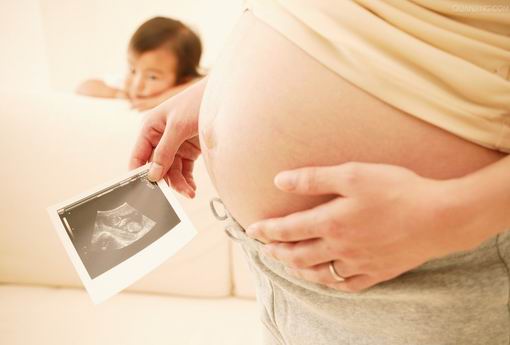Entry overview: Termination of pregnancy after less than 28 weeks of pregnancy and fetal weight less than 1000g is called abortion. Miscarriage occurs in the 12th week of pregnancy, the former is called early miscarriage, and if it occurs in the 12th to less than 28th week of pregnancy, it is called late miscarriage. Abortion is divided into spontaneous abortion and induced abortion. The incidence of spontaneous abortion accounts for about 15% of all pregnancies, and most of them are early abortions. There are also two specific types of miscarriage: missed miscarriage and habitual miscarriage.

Basic Information
Chinese name: Abortion
English name: abortion
Clinic: Obstetrics and Gynecology
Common causes: genetic factors, environmental factors, maternal factors, placental endocrine insufficiency, immune factors
Common symptoms: vaginal bleeding and abdominal pain
Cause introduction
There are many reasons for miscarriage, mainly in the following aspects.
1. Genetic defects
In early spontaneous abortion, 50%-60% of embryos with abnormal chromosomes are mostly abnormal in the number of chromosomes, followed by abnormal chromosome structure. Numerical abnormalities include trisomy, triploidy and X monosomy; structural abnormalities include chromosomal breakage, inversion, deletion and translocation. Most embryos with chromosomal abnormalities result in miscarriage, and very few may continue to develop into fetuses, but some functional abnormalities or combined malformations may also occur after birth. In the case of a miscarriage, the product of pregnancy is sometimes just an empty gestational sac or a degenerated embryo.
2. Environmental factors
There are many external adverse factors affecting reproductive function, which can directly or indirectly cause damage to the embryo or fetus. Excessive exposure to certain harmful chemicals (such as arsenic, lead, benzene, formaldehyde, chloroprene, ethylene oxide, etc.) and physical factors (such as radiation, noise and high temperature, etc.) can cause miscarriage.
3. Maternal factors
(1) Systemic diseases: Acute diseases during pregnancy, high fever can cause uterine contractions and lead to abortion; bacterial toxins or viruses (herpes simplex virus, cytomegalovirus, etc.) enter the fetal blood circulation through the placenta, causing fetal death and abortion. In addition, severe anemia or heart failure in pregnant women can cause fetal hypoxia and may also cause miscarriage. Pregnant women suffering from chronic nephritis or hypertension, placental infarction may cause miscarriage.
(2) Reproductive organ diseases: Pregnant women have miscarriage due to uterine malformations (such as double uterus, septate uterus and uterine dysplasia), pelvic tumors (such as uterine fibroids, etc.), which can affect the growth and development of the fetus. Lax internal cervical orifice or severe cervical laceration, prone to late miscarriage due to premature rupture of membranes.
(3) Endocrine disorders: Hypothyroidism, uncontrolled severe diabetes, and insufficient corpus luteum function can all lead to miscarriage.
(4) Trauma: Abdominal surgery or mid-trimester trauma during pregnancy, especially early pregnancy, can cause uterine contractions and cause miscarriage.
4. Insufficiency of placental endocrine function
During early pregnancy, the gestational corpus luteum of the ovary secretes progesterone, and the placental trophoblasts also gradually produce progesterone. After 8 weeks of gestation, the placenta gradually becomes the main site for the production of progesterone. In addition to progesterone, the placenta also synthesizes other hormones such as beta-chorionic gonadotropin, placental lactogen and estrogen. During early pregnancy, the above-mentioned hormone levels drop, making it difficult to continue the pregnancy and leading to miscarriage.
5. Immune factors
Pregnancy is like an allogeneic transfer. There is a complex and special immunological relationship between the embryo and the mother, which prevents the embryo from being rejected. If both mother and child are immune, it can cause the mother to reject the embryo and cause miscarriage. Relevant immune factors mainly include the father's histocompatibility antigen, fetal-specific antigen, blood group antigen, maternal cellular immune dysregulation, insufficient maternal blocking antibodies during pregnancy, and insufficient maternal cytotoxic antibodies against paternal lymphocytes.
Clinical symptoms
The main symptoms of miscarriage are vaginal bleeding and abdominal pain. Vaginal bleeding occurs in the miscarriage within 12 weeks of gestation. At the beginning, the villi and decidua are separated and the blood sinuses are opened, and the bleeding begins. When the embryo is completely separated and expelled, the bleeding stops due to uterine contractions. The whole process of early miscarriage is accompanied by vaginal bleeding; in late miscarriage, the placenta has already formed, and the process of miscarriage is similar to that of preterm birth. The placenta is discharged after the fetus is delivered, and there is generally not much bleeding. Abdominal pain during miscarriage is paroxysmal uterine contraction-like pain. After vaginal bleeding occurs in early miscarriage, embryo separation and blood clots in the uterine cavity stimulate uterine contractions, resulting in paroxysmal lower abdominal pain, characterized by vaginal bleeding often before abdominal pain. Late miscarriage is characterized by paroxysmal uterine contractions, followed by placental abruption, so vaginal bleeding occurs after abdominal pain. The size of the uterus, the dilatation of the cervix, and the rupture of the membranes are checked at the time of miscarriage, depending on the gestational week and the process of the miscarriage.
Clinical Type: The clinical type of miscarriage. Actually the different stages of miscarriage development.
1. Threatened miscarriage refers to a small amount of vaginal bleeding before 28 weeks of pregnancy, followed by paroxysmal lower abdominal pain or low back pain. Gynecological examination is not open, the fetal membrane is not ruptured, the pregnancy product is not discharged, and the size of the uterus is similar to the size of the uterus. The number of menopausal weeks is consistent, and the pregnancy is expected to continue. After rest and treatment, if the bleeding stops and the lower abdominal pain disappears, the pregnancy can continue.
2. Inevitable miscarriage means that miscarriage is inevitable. It develops from a threatened miscarriage when vaginal bleeding increases, paroxysmal lower abdominal pain increases, or vaginal discharge (rupture of membranes) occurs. Gynecological examination revealed that the cervical orifice has been dilated, and sometimes embryonic tissue or fetal sac can be seen blocked in the cervical orifice, and the size of the uterus is consistent with or slightly smaller than the number of menopausal weeks.
3. Incomplete abortion refers to the fact that part of the pregnancy product has been excreted from the body, and part of it remains in the uterine cavity, which develops from inevitable miscarriage. Due to the residual part of the pregnancy product in the uterine cavity, the uterine contraction is affected, resulting in continuous uterine bleeding, and even hemorrhagic shock due to excessive bleeding. Gynecological examination shows that the cervix has been dilated, and blood is constantly flowing out of the cervix. Sometimes it can be seen that placental tissue is blocked in the cervix or some pregnancy products have been discharged into the vagina, while some remain in the uterine cavity. The uterus is generally less than the number of weeks of menopause.
4. Complete miscarriage means that all the products of pregnancy have been discharged, vaginal bleeding has gradually stopped, and abdominal pain has gradually disappeared. The gynecological examination revealed that the cervix was closed and the uterus was close to normal size. The above-mentioned clinical types of miscarriage, that is, the developmental process of miscarriage. In addition, there are three special cases of miscarriage.
(1) Missed abortion refers to the death of the embryo or fetus, which remains in the uterine cavity and has not been discharged naturally. After the death of the embryo or fetus, the uterus does not increase but shrinks, and the early pregnancy reaction disappears. If it has reached the second trimester, the abdomen of the pregnant woman does not increase, and the fetal movement disappears. The gynecological examination showed that the cervix was not opened, the uterus was smaller than the number of menopausal weeks, and the texture was not soft. Fetal heartbeat was not heard.
(2) Habitual abortion refers to the occurrence of 3 or more consecutive spontaneous abortions. In recent years, recurrent spontaneous abortion is commonly used in the world to replace habitual abortion. Each miscarriage mostly occurs in the same gestational month, and its clinical course is the same as that of general miscarriage. The causes of early miscarriage are often luteal insufficiency, hypothyroidism, and chromosomal abnormalities. The most common causes of late miscarriage are cervical laxity, uterine malformations, and uterine fibroids. If the internal cervical opening is loose after pregnancy, often in the second trimester, the fetus grows, the amniotic fluid increases, the intrauterine pressure increases, the fetal sac protrudes to the internal cervical opening, and the cervical canal gradually shortens and expands. Most patients are asymptomatic, and once the membranes rupture, the fetus will be expelled immediately.
(3) Abortion infection: In the process of abortion, if the vaginal bleeding time is too long, there is tissue remaining in the uterine cavity or illegal abortion, etc., it may cause intrauterine infection. In severe cases, the infection can extend to the pelvic cavity, abdominal cavity and even the whole body. Pelvic inflammatory disease, peritonitis, sepsis and septic shock are called abortion infection.







